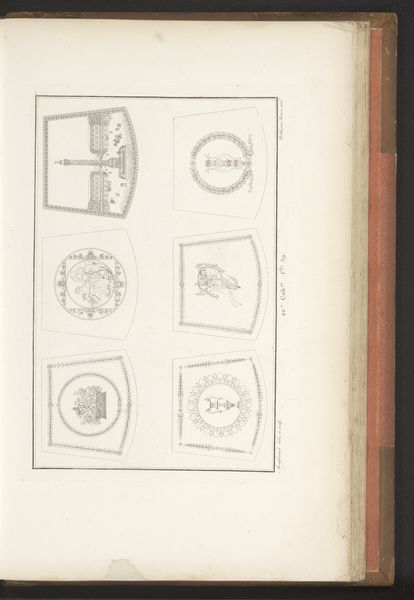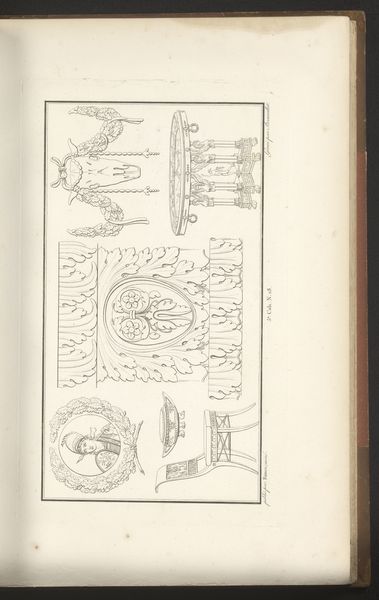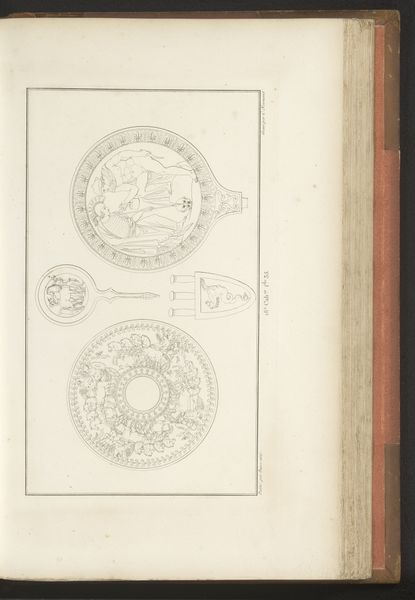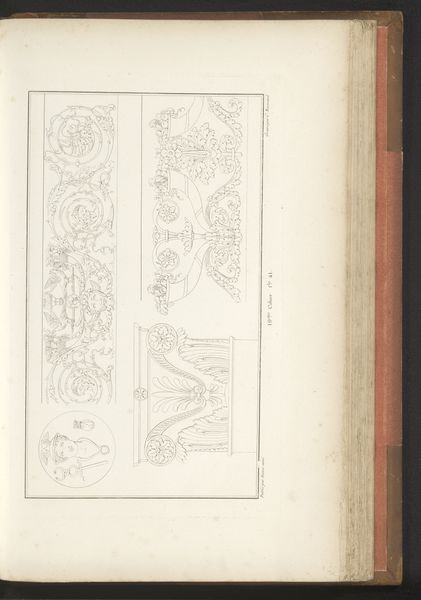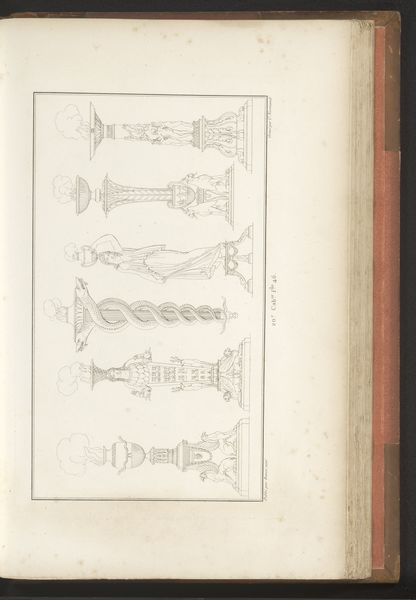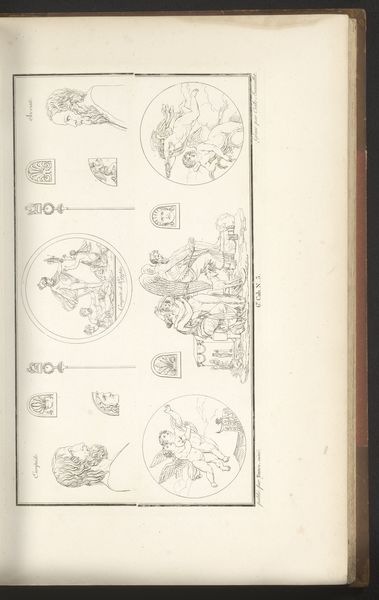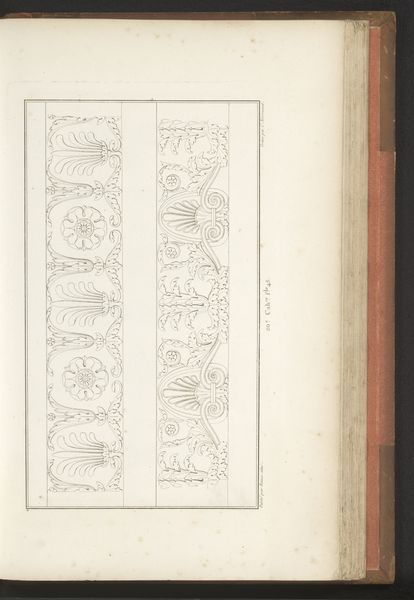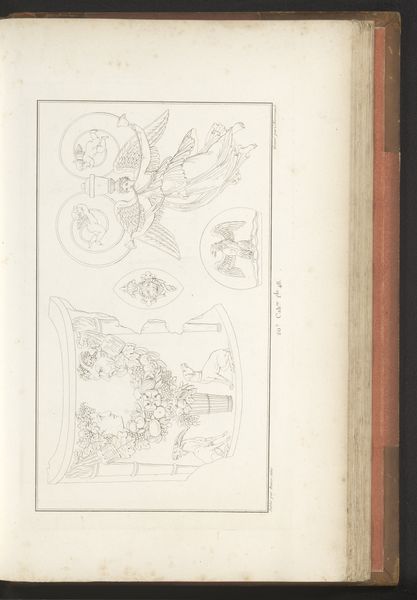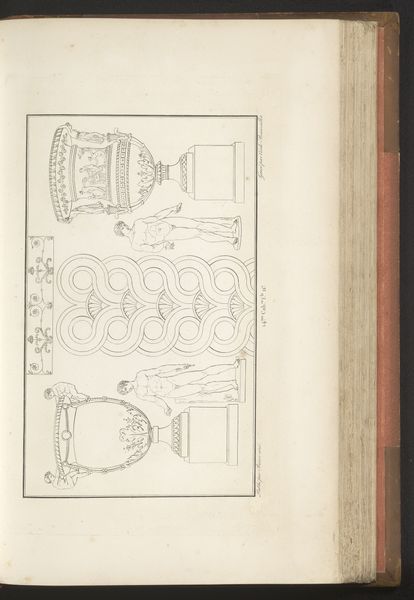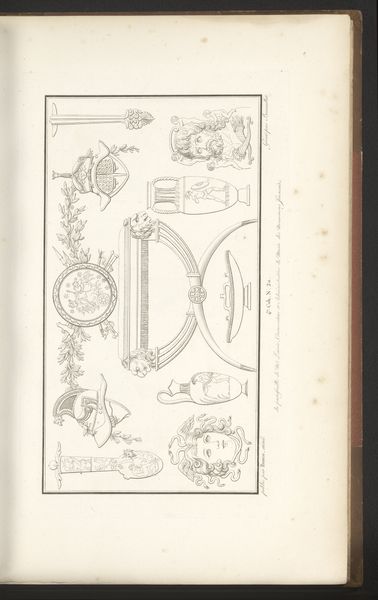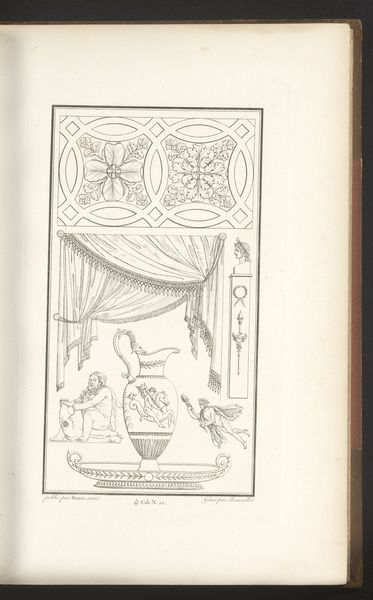
drawing, print, paper, ink
#
drawing
#
neoclacissism
# print
#
figuration
#
paper
#
ink
#
ancient-mediterranean
Dimensions: height mm, width mm
Copyright: Rijks Museum: Open Domain
Editor: This drawing, titled "Spiegel en vazen," created around 1820 by Charles Pierre Joseph Normand, presents a study of vases in ink on paper. The style reminds me a bit of ancient Greek pottery designs. What aspects of its historical or cultural context strike you? Curator: The revival of classical art in the Neoclassical period wasn’t just an aesthetic choice, but also a socio-political one. The aristocracy admired the aesthetics and wanted to associate themselves with that earlier sense of legitimacy and imperial structure. Consider how the discovery of sites like Pompeii and Herculaneum fueled this interest. How does Normand’s careful rendering here align with that broader movement? Editor: I suppose that copying ancient works like this might imply a reverence for the past, attempting to create something timeless, much like the cultures who made the artifacts to begin with. Is it fair to see that this image creates distance as well? Since the composition reproduces something so ancient, rather than portraying daily contemporary life? Curator: That’s a very astute observation! Consider the function of such images in a rapidly changing society. While superficially celebrating an older order, are they subtly questioning or perhaps even critiquing contemporary life through an idealized lens of antiquity? Do you think prints like this could've influenced contemporary tastes, even shaping interior decoration? Editor: Definitely, seeing these vases memorialized and printed for wider distribution makes me think these designs would spread into other artistic disciplines such as architecture and other design elements. I never considered how a drawing of vases could reflect power dynamics! Curator: Precisely! Think about how these prints circulated. Were they primarily accessible to wealthy elites, further reinforcing class divisions, or did they become more democratized through wider reproduction? Editor: Wow, that really makes you consider who was able to view and purchase them at the time! This changes how I appreciate it, thinking beyond just simple aesthetics. Curator: Exactly, and that's the power of considering the social life of art!
Comments
No comments
Be the first to comment and join the conversation on the ultimate creative platform.
